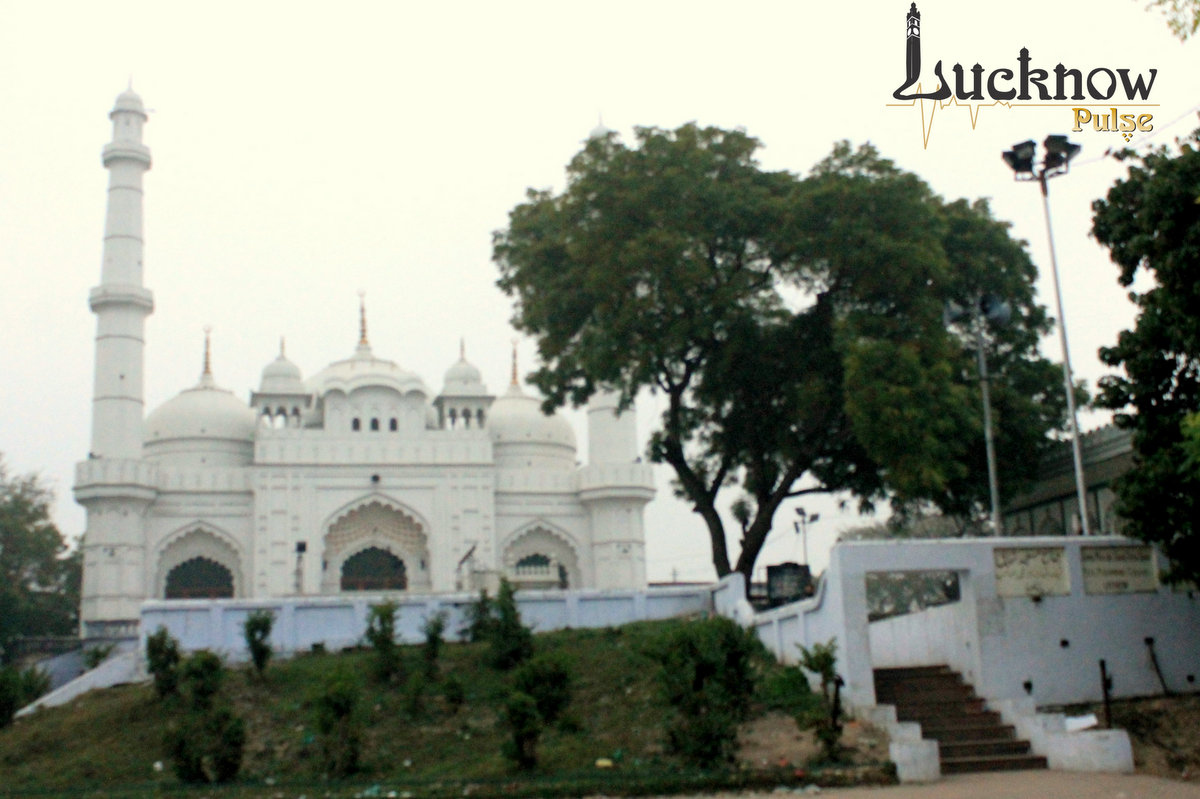The city of Lucknow is home to some of the finest ancient mosques such as Asafi Masjid, Jama Masjid, Tahseen ki Masjid and Teelay Wali Masjid to name a few. All these mosques were built during the reign of Nawabs in Lucknow. Some Nawabs used to take personal interest in the construction of the mosques, hence elaborate architectural arrangements used to be made to make the mosques visually appealing. Fine architectural elements of Mughal, Persian, Victorian and Turkish structural designs were incorporated in the construction of the mosques during the rule of Nawabs.
The renowned Teelay Wali Masjid located at the banks of Gomti River in Lucknow has an ancient past. The architectural beauty and aura of the masjid still strikes a chord with the people of Lucknow and even visitors. Muslims from all over Uttar Pradesh try to come to Lucknow to attend the Alvida Namaaz (last Juma prayer of Ramadan) at Teelay Wali Masjid; such is the historical and religious significance of this heritage mosque.
History of Teelay Wali Masjid
Teelay Wali Masjid was built next to Lal Pul or Pucca Pul (earlier known as Hardinge Bridge) by the banks of Gomti river. This heritage mosque is also known as Alamgiri Masjid and was built during the reign of Emperor Aurangzeb by Sultan Ali, who was the governor of the Province of Oudh (Awadh). The mosque is renowned for its brilliant sobriety of adornment and architectural symmetry. The mosque is said to be more than 350 years old.
The mausoleum of Shah Pir Mohammad is also located within the premises of the mosque. Sultan Ali was considered to be the disciple of Shah Pir Mohammad and he ordered the construction of Teelay Wali Masjid next to the maqbara (mausoleum) of Shah Pir Mohammad. A madarsa and a student hostel were built around the masjid for imparting Islamic education. Over a period of 200 years, this place became the center of Islamic education. Teachings of Quran, Hadith, Tafseer, Falsafa (Philosophy), Tareekh (History) and Mantiq (logic) were taught to the students. Mulla Ghulam Rasool, Mulla Ghulam Naqshband and even Mulla Shah Afaq were some of the brightest students of the madarsa and they kept the tradition of learning, alive. Shah Pir Mohammad used to teach all these students at the madarsa.
Mausoleum of Shah Pir Mohammad
Shah Pir Mohammad came to Lucknow during the rule of Emperor Aurangzeb. He was born in Jaunpur district of Uttar Pradesh in 1619 A.D. He completed his Islamic education at Manikpur and studied under the able guidance of Qari Abdul Qadir Umri of Lucknow and Allama Haider of Delhi. Shah Pir Mohammad was also considered to be the disciple of Sheikh Abdullah Chishti. He devoted his entire life for religious principles and scriptures. He guided many students and followers, who came to him to seek correct interpretation of religious matters. Shah Pir Mohammad wrote quite a few religious treaties and he died in 1674 A.D. in Lucknow. He was buried within the premises of Teelay Wali Masjid.The mausoleum of Shah Pir Mohammad has a big dome, which is built on an elevated cylindrical drum. The drum and dome are exactly twice the elevation of the 3-arched square mausoleum at the bottom. Apart from the grave of Shah Pir Mohammad, there are some graves of the later followers or students of Shah Pir Mohammad.
The Current State of Teelay Wali Masjid
Apart from the regular prayers at the mosque, the afternoon prayers on the last Friday of the Islamic month Ramzan—Jumu’atul-Widaa (Alvida) Namaz—has great religious importance. According to some historians, Alvida Namaz was actually the first prayer that was offered here. Every year, more than one lakh Muslims offer Alvida Namaz at the Teelay Wali Masjid. Muslims from all over the state come as early as dawn or one day before to offer Alvida Namaz here. Separate tents used to be erected for women so that could offer Alvida prayer here. However, as the crowds grew bigger, this system was abandoned.
The Teelay Wali Masjid can accommodate 6500-7000 people at a time while the congregation spills to Gautam Buddha Park, Tikona Park and Pucca Pul during the Alvida prayer. The local government makes elaborate arrangements for Alvida Namaz and installation of plastic tanks and water pumps are done for the convenience of namazis (worshippers) to perform wazu (ablution). Every year, Urs (religious fair) is conducted at the mausoleum of Shah Pir Mohammad. People from far across the state come and participate in the annual fest called Urs.
The aura and charm of Teelay Wali Masjid holds prominence in the lives of Muslims of Lucknow. Rich historical past coupled with the religious and educational significance of the heritage mosque and mausoleum influence the people of Lucknow to take pride in this wonderful possession.


Comment here